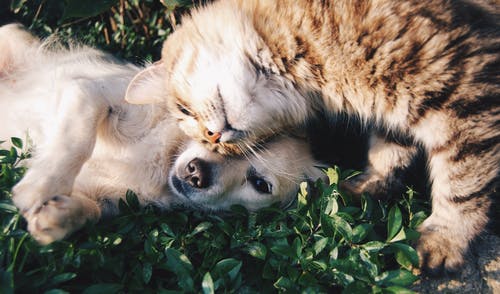If you’re a pet owner, the likelihood is that you will already be doing everything you can think of to keep your little one safe. The problem is, not enough people understand the dangers that certain cleaning products can cause to dogs, cats, and other animals.
Disinfectant sprays, sadly, are the thing that keeps us safe, but simultaneously the thing that puts our pets at risk. The ingredients in the majority of cleaning products are toxic to animals and could even be fatal.
Before you panic, remember that there are simple steps you can take to ensure that yourself and your home stay clean, but that your pets also stay safe. To find out more about keeping vigilant with your pets and how you can keep them safe around cleaning products, keep reading this guide!
The risks involved with cleaning products
Cleaning products are a risk for pets because of the ingredients in them, which are toxic to most household animals. Because these animals do not understand the danger of such products, they are more likely to come into contact with them accidentally.
Most commonly, harm occurs when pets ingest cleaning products in toilets or on floors by licking them, clean their paws and ingest toxic substances like laundry detergent, or eat air fresheners that are dotted around the house.
What cleaning products are not safe for pets?
Most of the cleaning products that we use are safe, as long as you use them properly, store them away, and rinse any surfaces that they have been used on.
However, there are certain ingredients in these products that you may want to steer clear of, or at least only use in small doses. These include ammonia, chlorine, formaldehyde, alcohol, and sodium hydroxide. These ingredients are most commonly found in harsh products like oven cleaner, drain unblocker, bleach, and toilet cleaner.
Tips for keeping your pet safe
Read the labels
Before using or purchasing any new cleaning products, make sure to read the label in order to find out what ingredients are in them and how they should be used. By doing this, you can make sure to measure out the correct dosage, which will reduce risk if your pet does come into contact with it.
Reading the labels also means that you can make an educated decision on whether to purchase a product. If it has high levels of bleach or alcohol in it, you may choose to leave it on the shelf and go for something which is less harmful to be used around pets.
Many people choose to hire a cleaning company like Proactive Cleaners instead, who have training in cleaning products and what should and shouldn’t be used around pets. This is a way to ensure that your pet will stay safe, and relieves some of the pressure off owners.
Seek medical help
In the case of your pet being poisoned by any cleaning products, do not attempt to resolve the situation by yourself at home. You should get the help of a professional veterinarian immediately.
If you are not able to visit your veterinarian straight away, then there are multiple phone numbers you can call for emergency advice. Time is precious when these situations arise, and could be the difference between your pet getting better and not.
If you notice your dog or cat vomiting, having diarrhea, having seizures, or acting differently than usual, get in touch with a vet. Even if it is a false alarm and they have not ingested anything harmful, it is always better to be safe than sorry.
Only use pet-safe products
One of the best ways that you can keep your pet safe around cleaning products is by using products that do not pose as big a risk. This may seem obvious, but a lot of people use harmful products on their pets without realising.
For example, if you have a dog, you should only be using certified safe products such as dog shampoo for them. You cannot use anything meant for humans, or even for other animals, without potentially putting your pooch in danger. If you’re ever unsure, read the label of the cleaning or grooming product that you want to use for specific instructions.
Additionally, when cleaning your pet’s bedding, blankets, or toys, do not be tempted to use high-strength or harsh detergents. A usual laundry detergent will be more than sufficient at removing stains and cleaning, and will not put your pet in harm’s way.
Minimise risk
To put your mind at ease, enforce preventative measures in order to minimise the risk that your pet will ever be near harmful cleaning products.
If you haven’t already done this, you should think about dedicating a space in your home, such as a cupboard or utility room, solely for cleaning products.This means that sprays or mops with dangerous chemicals in them will not be left lying around. For even more security, make sure the doors to this area are firmly locked and unable to be nudged open by an eager pet’s nose.
When you are finished using cleaning products, rinse out buckets, sponges, and mops as thoroughly as possible, and make sure that there is no residual product left on floors or other surfaces.
Final thoughts
Most cleaning products will pose some level of risk to your pet due to its ingredients; this is unavoidable. However, there are ways you can reduce this risk, keep your pet happy and safe, and your house clean!
We recommend getting a cleaning company involved if you want to be completely assured that no harmful products will get near your pet, or upping your vigilance with how you clean and the ingredients you use.










